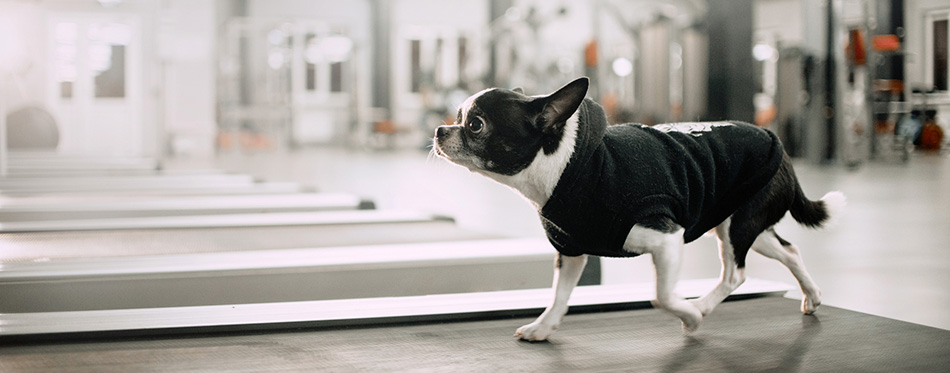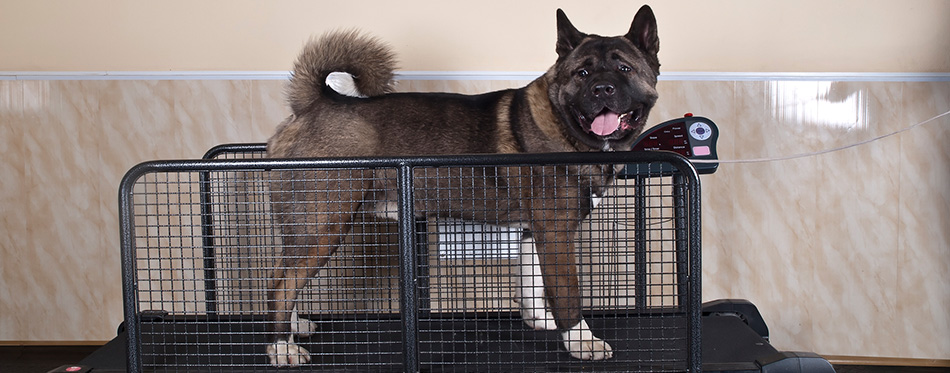If your pooch happens to be the high-energy dog, the importance of constant exercise will not be news to you. In addition to keeping it fit and lean, exercise also goes a long way in wearing him/her out, and thus, keeps it from becoming a nuisance and that’s when treadmills come in. Treadmills are not only meant for humans; your canine companion can also work at losing a few extra pounds too. For sure, the thought of your dog walking on a machine might seem strange or even hilarious; nonetheless, it is a good way for them to work off some pent up energy.
You can even take it up a notch to teach your canine friend the skills of running safely on the treadmill, as part of your dog’s indoor training. No doubt, those days when outdoor walks and runs are impossible due to inclement weather, the time will come to give some considerations to dog treadmill training. Provided you properly teach your pet to run on the treadmill, it will be totally safe. Just follow the useful tips below first.

Acclimatize Your Dog to the Treadmill
When you are ready to teach your dog to walk on a treadmill, the first step is to make it become acclimatized to just being on the machine. Because the machine is big and noisy, your dog might find the treadmill quite scary. Start the process by integrating the treadmill into your daily games with rewards for the pup when it gets closer, or better still when he mounts the machine.
Related Post: Dog Whistles
Use Obedience Training
The next step is slotting the treadmill into your sessions for obedience training – let your pup mount the treadmill prior to issuing commands like “down” and “sit”. There is also room to teach your furbaby a special command that will make him move on the machine without help. All the aforementioned steps can be achieved when the Treadmill is off, once your pet is used to the machine, you can start teaching the dog to walk on the running treadmill.
At this stage, leashing your pup is very important, and it should stand on the machine facing forward. A second person should be handy to put on the treadmill (the first time should be at the lowest speed), and you have to encourage your pooch with enough praises and treats. You will need to gradually increase the pace after every training session until you have your furbaby trotting at quite a comfortable pace. Then, start increasing the span of the dog’s treadmill running sessions by one minute per day until it becomes possible for it to run for up to 15 minutes to 20 to 30 minutes, especially if it happens to be an energetic and athletic breed.
You can also incorporate clicker training into your dog’s treadmill training sessions with the following steps:
- Position the machine, so your pooch isn’t walking straight into a wall – this is very important.
- Leverage clicker training if your pet dog happens to be clicker trained.
- Start by getting the dog unto the treadmill while it is off – let the dog adjust to the machine – then click and reward.
- Continue for the length of time it will take for your furry friend to pick interest in staying on the machine.
- Now that you are ready to keep the dog close to the treadmill, hit the “on” button.
- The dog should be allowed to get used to the sound at a safe distance – remember your clicker, click-praise-reward.
- Smaller dogs can be picked up while leashed and placed on the machine that is already rolling at the slowest pace. Big sized pups can be lured with a treat to walk forward, and stand on the rolling treadmill, and don’t forget the clicks, praises, and rewards.
- Encouraging words are necessary to prevent your pooch from being frightened.
- Mount the treadmill yourself, and hold onto the leash, whilst teaching your pup how to walk in an upright position on the machine. When your furbaby sees you doing the walks, the chances are that it would relax and let it flow.
- Continue until your dog’s fears are all settled, and they have become adept at running on the treadmill.
- If, after all the trouble, your dog still feels uncomfortable with the machine, take a standing position before the treadmill adjusting the dog’s position with the aid of its leash. Once you get the pup in the accurate position, get it to walk towards you with treats as a lure.
Before long, your dog will be able to walk on the treadmill without help, but prior to this, always make use of a leash and harness for the dog’s safety. Avoid feeding your furbaby an hour before and after the rigorous exercise.
Take a look at our article on the Best Dog Treats.
Dog on a Treadmill: What Are the Benefits?
Pet parents that are accustomed to taking their pups on outdoor walks cannot help but wonder what benefits the treadmill can offer to their dogs. The top of the advantages is that this form of exercise can be staged indoors – you may be grateful for this kind of arrangement in very bad weather when the elements decide to go against your plans. No doubt, with the best dog treadmills at your disposal, even a storm will not stop your furbaby from going for walks.
Another benefit of the treadmill is that your pooch will be able to indulge in a real workout devoid of distractions. This is essential for high-energy breeds, as well as dogs that need to lose weight. Furthermore, while on your normal outdoor walks, your pup may likely spend a better part of the time sniffing around rather than getting some real exercise; hence why treadmills come in handy.
Head over to our review of Dog Agility Tunnels.

Other Important Things to Note When Training With a Treadmill
Although tempting, you should try to understand that running or taking walks on the treadmill should not be seen as a replacement for your daily walks, but it will still be beneficial for your pup to master the ropes. The reason is that time will come when inclement weather will prevent you from taking your furbaby on long walks, or you might not be up for the hassle that comes with walking. Times like these call for the use of the treadmill, just get the machine running, and allow your dog to run or walk on his own.

